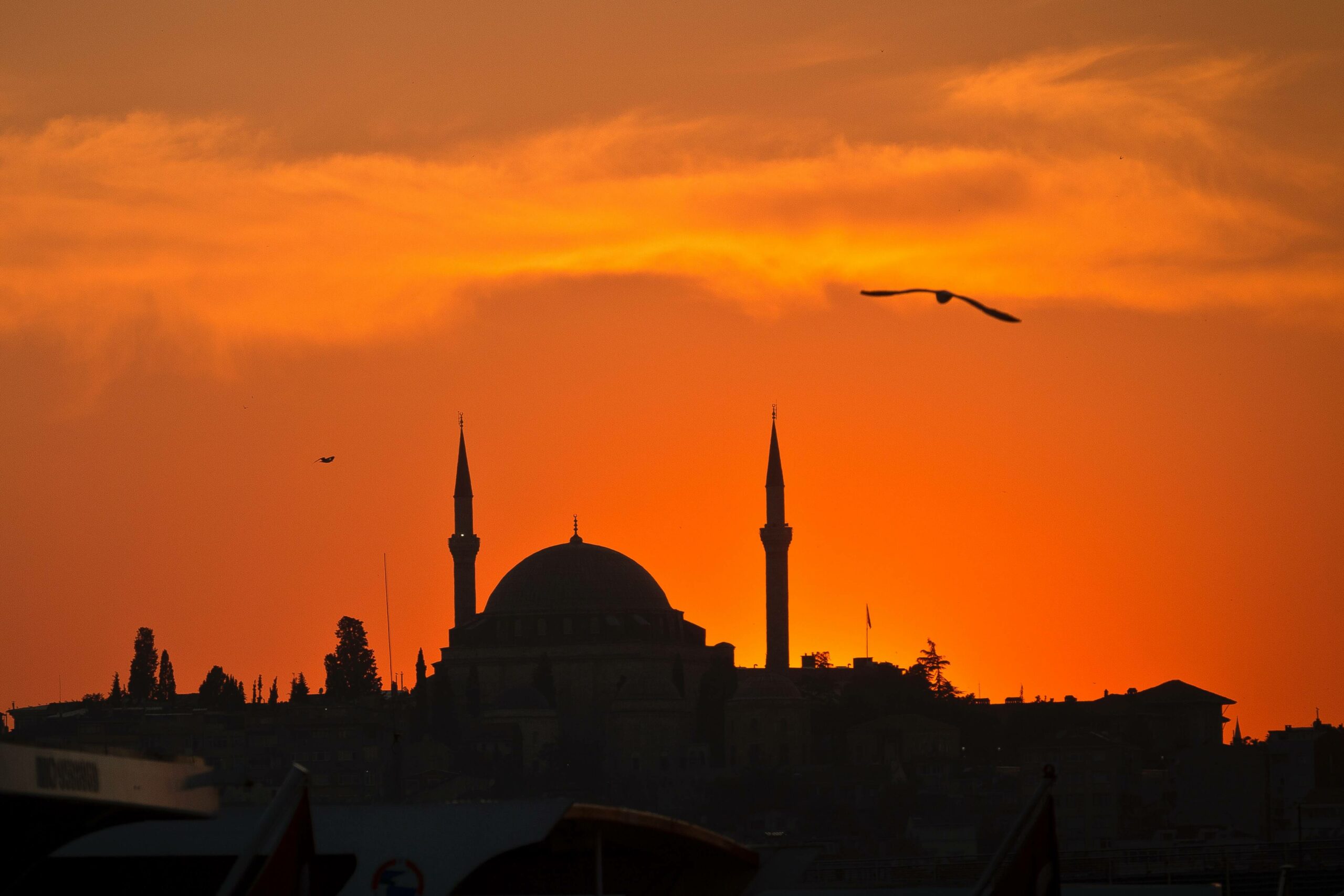Muslim wedding traditions and rituals are some of the most unique and, at times, formal wedding practices across all cultures.
These traditions stem from the holy, Muslim text, the Koran, which gives weighty significance to the institution of marriage. In Islam, marriage is not only a physical and legal union but a spiritual one meant to facilitate the preservation and spread of Islam.
Since marriage and Islam are inextricably tied, it follows that the ceremonies and rituals associated with Muslim weddings carry a rich cultural history as old as the religion of Islam itself.
Of course, the degree to which Muslim wedding traditions and rituals are adhered to depends on the religious background of the bride, groom, and their respective families.
There are also geographic and ethnic twists to many Muslim traditions and rituals because Islam has a prodigious and diverse following.
For example, South Asian Muslim wedding ceremonies last many days, while Arabic Muslim weddings can last only a few hours. Despite the cultural differences between different groups of Muslims, every traditional Muslim wedding shares a few key attributes, such as a Nikah and a Walima.
10 Muslim Wedding Traditions and Rituals
1. Nikah or Katb El-Kitab
The nikah (in Pakistani and Indian culture) or katb el-kitab (in Middle Eastern cultures) is a religious ceremony somewhat comparable to the exchange of vows western cultures practice during wedding ceremonies.
However, there are some key differences between vows and nikah. While western cultures allow the bride and groom to prepare their vows if they wish, nikah is a formal ritual informed by the rites and duties of marriage as detailed in the Koran.
During the nikah or katb el-kitab, four witnesses (two for the bride and two for the groom) look on while a Muslim cleric reads the duties of wife and husband from the Koran to the couple. This ritual confirms that both the bride, groom, and their respective families understand the terms of Islamic marriage.
The cleric’s reading is symbolically important, as it suggests that Allah has seen and approved of the bride and groom’s marriage.
On a less spiritual level, the cleric’s reading of the Koran contextualizes marriage within the broader Muslim culture. Since nikah is sacred and unique to Muslims, it signifies a cultural similarity that unifies Muslims all over the globe.
Despite nikah’s religious and cultural significance, it is not a somber ritual. Depending on how stringently the bride and groom observe Islam, the nikah may be casual with a relaxed, social atmosphere or formal with a serious, yet joyful atmosphere.
After the cleric finishes reciting the duties and rites of marriage from the Koran, all parties present at the nika recite a Dua (prayer) from the Koran.
Once the bride and groom agree to the marriage, a few family members recite the first surah (chapter) of the Koran. The surah contains 7 verses that ask Allah for guidance and mercy.
After the religious prayers and rites have concluded, the bride and groom sign a legally binding contract. Then it’s time to party at the Walima.
2. Walima
Broadly defined, Walima is the wedding reception that follows the nikah of a traditional Muslim wedding.
While the nikah or katb el-kitab is a religious and legal ceremony, the Walima is a full-on celebration with halal food, traditional dancing, and entertainment.
Generally, the families of the bridegroom are responsible for sponsoring the walima. The features of a walima vary according to geographic region but share a few common elements.
Common features of a Walima:
- No alcohol (wait, no open bar?)
- Halal food and tons of it, I recommend sizing up your attire to accommodate
- Tons and tons of family, including cousins of dubious relation
Although some Islamic scholars debate the exact timing of when a walima should occur, no Muslim wedding is complete without one.
3. Mahr
A mahr or the ceremony of gifting a mahr is comparable to what western cultures call a dowry. However, unlike a dowry, a mahr is given by the groom to his bride’s family.
The Koran states that a mahr must be “one gold piece.” Although Islam closely follows the sayings and teachings of the Prophet Muhammad, Islamic scholars have interpreted one gold piece to mean any monetary gift deemed acceptable to the bride’s family.
Modern Islamic scholars have taken greater interpretive liberties, stating that mahr can be anything, including money, sentimental objects, or emotional support (isn’t that what husbands are for anyways?).
Modern Islamic scholars aren’t hung up on gold coins because they understand that marriages between couples with little money are just as valid as marriages between well-to-do couples.
Although the groom has some flexibility in determining what constitutes a mahr, the bride’s parents will ultimately need to approve the groom’s mahr before the nikah.
Islamic law requires the gifting of the mahr and the explicit mention in the marriage contract of the mahr to be given.
In some cases, the groom and bride’s family may agree to split the mahr into two parts: muajjal and ghaire mu’ajjal. Muajjal is given before the marriage ceremony and ghaire mu’ajjal after the marriage ceremony.
In the greater context of Muslim culture, a mahr symbolizes a groom’s ability to care for his wife.
4. Religious Dress
Islam emphasizes the importance of modesty. Both men and women attending a traditional Muslim wedding should dress conservatively.
Garments that cover the legs (who would wear shorts to a wedding of any religion anyways?), arms, and for women, the hair, are required at many Muslim weddings.
If the marriage ceremony occurs at a mosque (Muslim church) attendees will need to remove their footwear before entering.
5. Gender Segregation
Gender segregation is another common Muslim wedding tradition, but it’s not a feature of every Muslim wedding. Even so, the degree to which the sexes are segregated can vary significantly from wedding to wedding.
If both the bride and groom’s families are devout Muslims, then men and women may be segregated for the entire marriage ceremony, either by separate tables or separate rooms.
Less devout Muslims may still require partial gender segregation, especially during the nikah, but may allow the sexes to mingle freely during the Walima.
6. Tolbe
Tolbe is an Arabic wedding ceremony that occurs before the groom announces the marriage. During a tolbe, the groom announces to the bride’s family his intention to marry their daughter. If the bride’s family consents to the marriage, then a prayer from the Koran is recited. The prayer is the Surah Al-Fatiha, or the first seven verses of the Koran.
By reciting the Surah al-Fatiha together, the groom and bride’s family symbolically understand the future marriage to be one guided by Allah.
Although the specific act of tolbe is an Arabic Muslim tradition, grooms from other Muslim cultures also ask the bride’s family for the bride’s hand in marriage before planning a wedding.
7. Zaffe
Another Muslim wedding tradition unique to Arabic cultures is Zaffe (roughly translated to entrance). It’s a very old tradition that might even predate Islam, but its believed that may have started in Acient Egypt.
Zaffe occurs before the commencement of the Walima. It starts even before the bride and groom enter the room. You’ll see different musicians, such as bag pipers and drummers, and dancers. Once the bride and groom enter their wedding reception to the tune of drummers and singers, they join the guests dancing and celebrating the union (or because they can’t wait to party).
8. Dabke
Dabke is a folk dance historically performed in the Levantine region, modern-day Syria, Palestine, Lebanon, Iraq, and Jordan.
Dabke combines elements of circle dancing, in which a group of people gathers around a musical performer, and line dancing, in which dancers organize themselves into lines and repeat simple dance steps to music.
Dabke is not necessarily a tradition of Muslim weddings but is a way to celebrate happy occasions in Muslim cultures such as weddings. Even if the bride and groom skip Dabke, some form of dance will occur; I can guarantee it, so bring comfy shoes.
9. Barmet Al-aroos or Rukhsati
The counterpart to Zaffe, Barmet Al-aroos, as it is known in Arabic cultures, and Rukhsati, as it is known in Pakistani and Indian culture, is the bride and groom’s exit from Walima. The wedding guests follow the newlyweds as they exit the Walima, cheering and clapping all the way to keep the energy high and the celebration going.
10. Joota Chupai
Joota Chupai is a south Asian wedding tradition where guests of the wedding hide the groom’s shoes. This tradition is not inherently Muslim but is a part of Indian and Pakistani culture, and so is played at south Asian Muslim weddings. Joota Chupai permits the wedding guests to have a harmless laugh at the groom’s expense.
Since Joota Chupai is not a strictly Muslim tradition, devout Indian and Pakistani Muslims may not practice this game at their wedding. However, other practical jokes may be played on both the bride and groom to keep the atmosphere light and cheerful.




